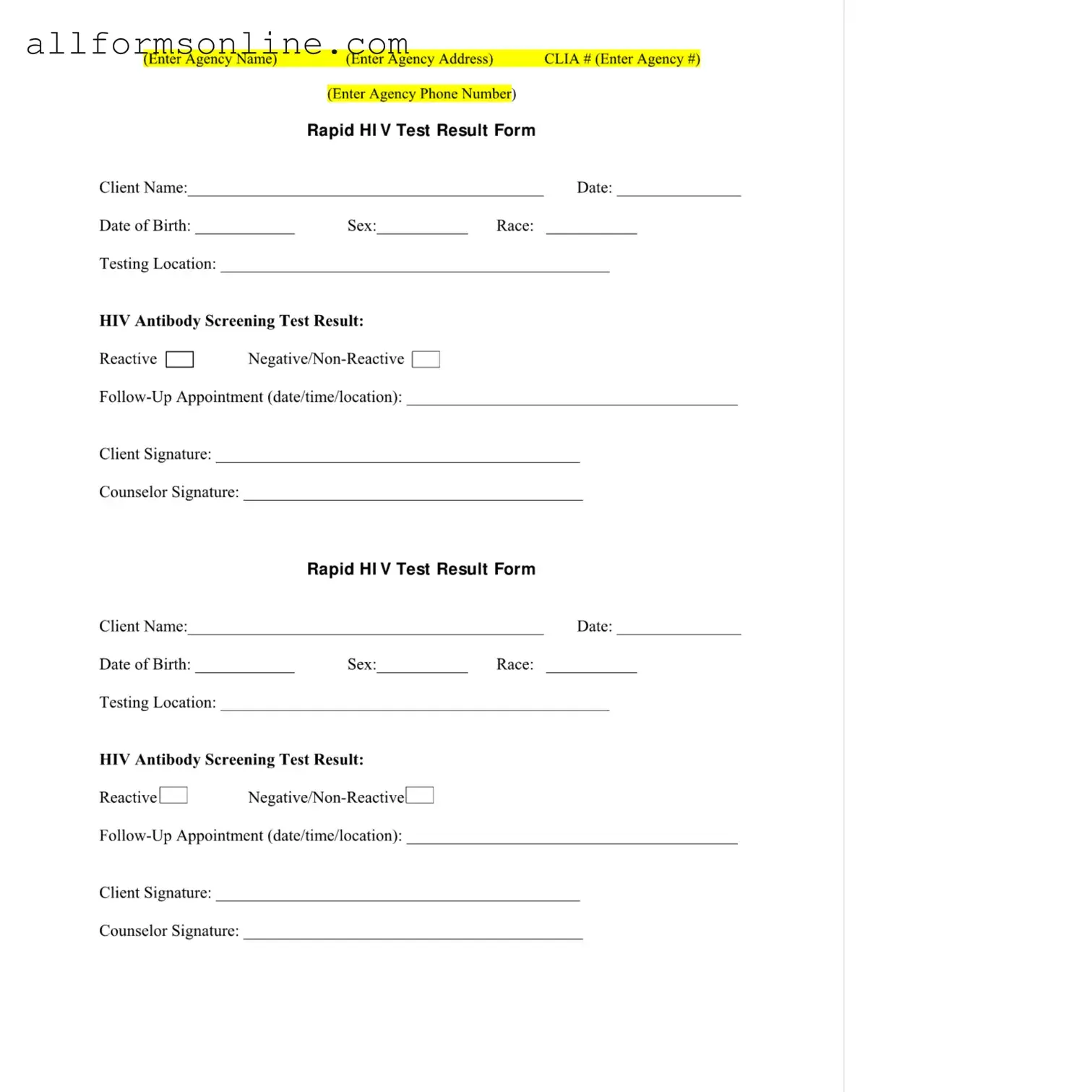What is a Negative HIV Test form?
The Negative HIV Test form is a document used to record the results of an HIV antibody screening test. It includes essential details such as the client's name, date of birth, race, testing location, and the result of the test, which indicates whether the result is reactive or non-reactive. This form serves as an official record for both the client and the testing agency.
What information is required on the form?
The form requires several key pieces of information. This includes the client's name, date of birth, race, and the testing location. Additionally, the result of the HIV antibody screening test must be documented as either reactive or non-reactive. The form also includes spaces for the client's signature, the counselor's signature, and details about any follow-up appointments.
What does a non-reactive result mean?
A non-reactive result indicates that no HIV antibodies were detected in the client's blood at the time of testing. This generally suggests that the client is not infected with HIV. However, it is important to note that if a person has been recently exposed to HIV, they may still test negative due to the window period, which can last several weeks. Consulting a healthcare provider for further guidance is advisable.
How should the form be stored and maintained?
The Negative HIV Test form should be stored securely to protect client confidentiality. It is important to maintain accurate records, including temperature logs for test storage and control devices, as specified in the testing protocol. Regular checks should be conducted to ensure that storage conditions remain within acceptable ranges, and corrective actions should be documented if any discrepancies occur.
What should be done if the test result is reactive?
If the test result is reactive, it is essential to follow up with confirmatory testing. A reactive result does not mean that a person is definitively HIV positive; further testing is necessary to confirm the diagnosis. The client should be informed about the next steps, and a follow-up appointment should be scheduled to discuss the results and any required actions.
Who can access the Negative HIV Test form?
Access to the Negative HIV Test form should be limited to authorized personnel only. This typically includes healthcare providers, counselors, and administrative staff involved in the testing process. Ensuring confidentiality is critical, and measures should be taken to protect sensitive information from unauthorized access.
